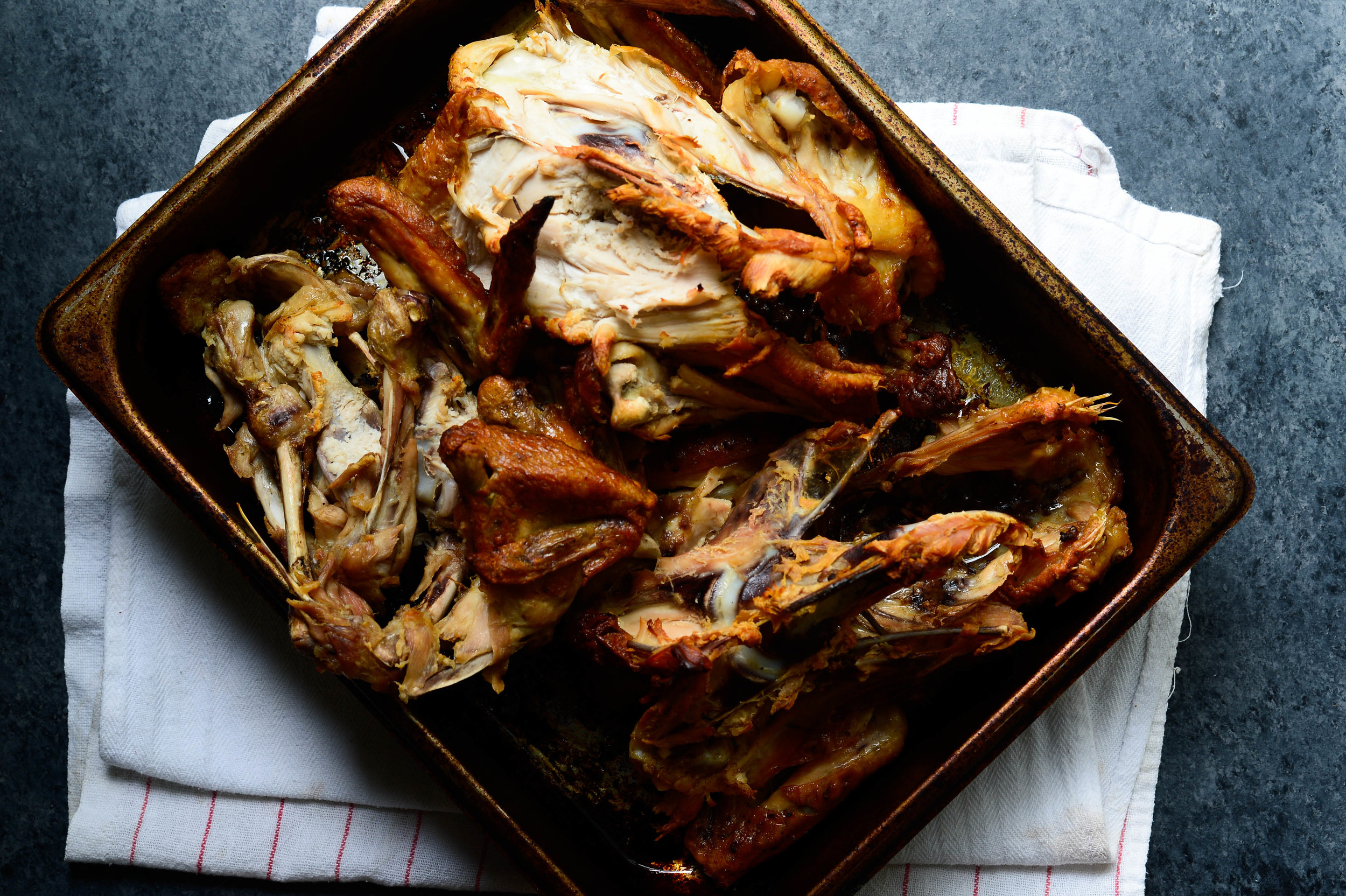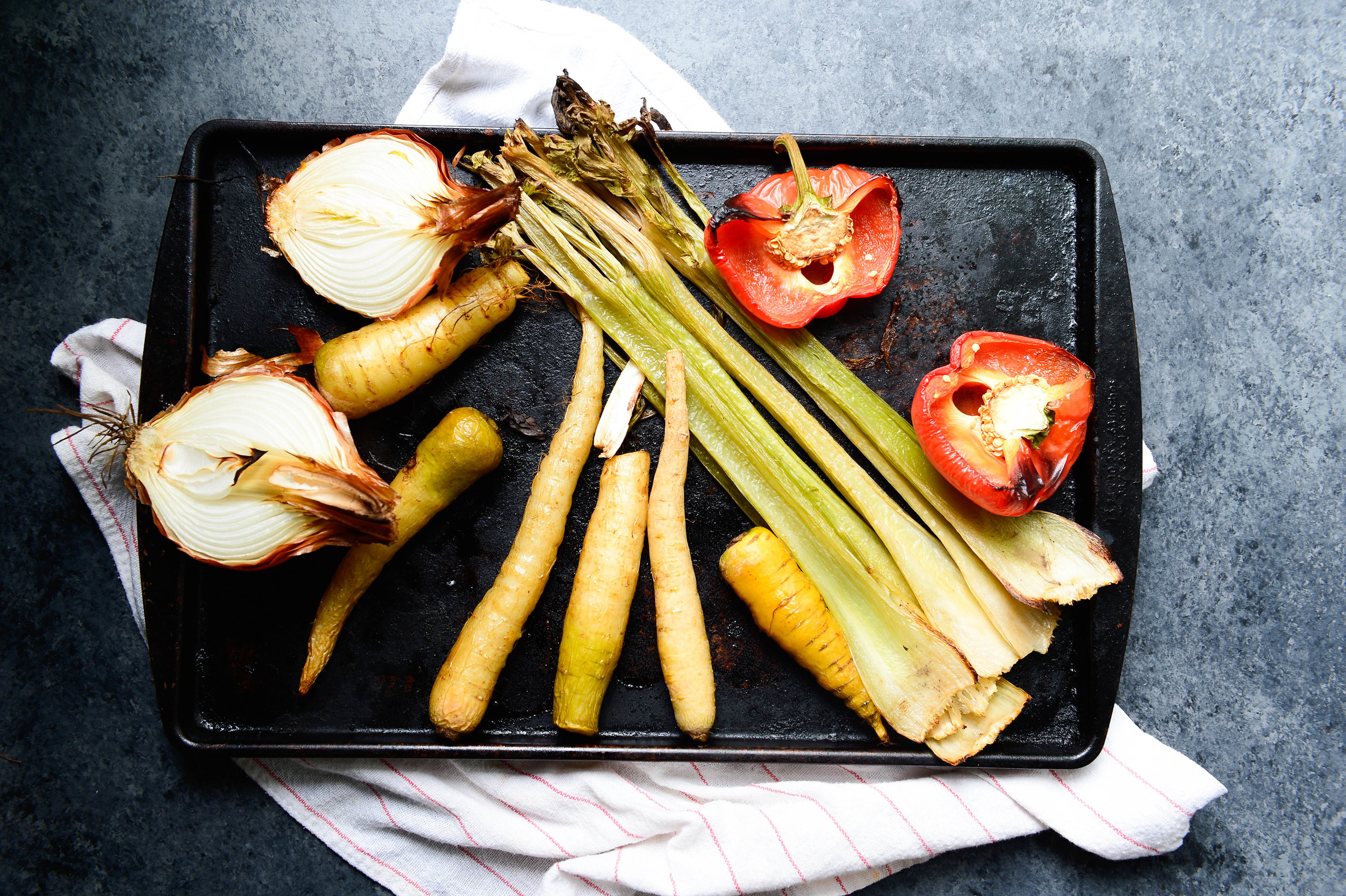The boldest bone broth
Friends and family have asked me to come up with delicious, practical meals that can be whipped up on a weeknight while the kids are running around screaming. So, I'm working on it. But before I start getting into how to make those meals more flavorful with very little effort, first I think it's necessary to get back to the basics.
In culinary school, we were taught that bone broth, or stock, is the foundation of all good cooking. Moreover, it was drilled into us that there are certain rules you must follow when making the perfect stock, otherwise you flunk culinary school and might as well give up cooking for the rest of your life. Those rules included cooking the stock for hours upon hours on end, never letting it come to a full boil for fear of clouding it, and skimming it meticulously so there’s no extra grease that blunts the flavor. Finally, you must strain it right away — not once, but twice! — because God forbid a little piece of protein or vegetable remnant makes it into your final dish.
While those all might be good rules to live by if you’re working at a high-end restaurant, I say that when it comes to making stock, there are no rules. Toss in a good combination of leftover vegetable ends, as many chicken or beef bones as you have, some herb stems, let it simmer for however long your kids are napping and you’ll have a decent stock.
Now, there are a few things you can do to make excellent stock — the kind you’ll want sip on with a squeeze of lime or add to soups, grains or sauces to make them endlessly more flavorful. If you do have 4 hours (or more) to kill one day and you’ve been saving up those rotisserie chicken carcasses and fennel tops in your freezer, here are five things you can do to make your stock shine:
- Roast the bones and vegetables with a little olive oil in a very hot oven before simmering. This is called brown stock, and it’s much bolder, richer and altogether complex in flavor.
- Add tomato paste. Tomato paste is already concentrated, so adding it to stock is like injecting it with effortless umami.
- Toss in all the herbs. I usually put any herb that’s not looking too hot in my stock. I also save parsley stems and fennel tops, which don’t have many other uses.
- Add mushroom stems. Again, umami. If you have them, use them. If not, save those mushroom butts for next time!
- Let it cook for as long as possible. I know I said 4 hours, but that’s the minimum. Start your stock in the morning on a rainy day when you plan to be inside and let it go for 6 to 9 hours for the ultimate flavor.
COOKING NOTES
For this, you'll need a very big pot, one that's ideally taller than it is wide so that your stock doesn't evaporate too much. You could also do it in two smaller pots, if that's what you have in your kitchen. Otherwise, halve or quarter the recipe as you see fit. You can use the vegetables listed or whatever you have available or leftover or going bad. Stock is a great way to clean our your pantry.
MAKES 1 GALLON
INGREDIENTS
8 pounds of bones (chicken, beef, pork, or whatever you have)
2 onions, sliced in half
4 carrots, sliced into quarters
1 stalk celery, sliced into quarters
1 bell pepper
1 cup mushroom stems (or whole mushrooms)
3 tablespoons tomato paste
Small bunch fresh thyme
Small bunch parsley or parsley stems
Small bunch basil leaves
2 bay leaves
1 teaspoon whole peppercorns
Enough cold water to cover the bones by 1 inch (probably about 5 to 6 quarts)
INSTRUCTIONS
Heat the oven to 450°F. Place the bones on a large baking sheet and rub with olive oil. Place al the vegetables on another baking sheet and rub with oil. Stick both pans in the oven (if they fit, otherwise do one and then the other) and cook until the bone smell roasted and are nicely browned, 20 to 25 minutes.
Remove everything from the oven and transfer to the largest pot you have.
Cover the bones in cold water and put over high heat. When the liquid is just about to come to a full boil, turn the heat down to a very gentle simmer. Add the vegetables, herbs and peppercorns. Once in a while, skim off any fat or scum that floats to the top. Simmer for 4 to 6 hours for chicken, or 5 to 9 hours for beef or pork. Top off with water to keep the bones covered, if necessary.
Once complete, let it cool slightly. Strain out the bones and vegetables. Let it cool completely to room temp, then chill or freeze in ice cube trays, which you can later transfer to plastic baggies.






